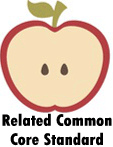Everyday Words Worksheets:
Describing People – Complete the sentences with the help of the word bank of adjectives.
Jackson Pollack – We take a look back at his work and describe him.
The Dancers – Find the meaning of fixed similes.
Did I Tell You? – Describe a time that you had the following feeling.
Pet Adoption – You volunteer at an animal shelter, describe the animals in the shelter.
Descriptive Words – This a bit of free response that makes an answer key impossible.
Things Around The House – Add context words to finish all the sentences.
Fran's Bus Trip – The words below are commonly used to describe things that might happen while traveling.
Adjectives – How many things can you think of in your everyday life that can be described using that adjective?
Describing Animals – In the box, write three animals that could be described using that adjective. BONUS: Can you come up with three adjectives to describe the baby panda?
Revealing Personality with Caricatures – What do you think that the artist that drew the caricature thought were Picasso's strongest features? What were his weakest?
Tell Me About Your Dog! – Look at each picture below. Then write an adjective on the line to describe the dog.
Describing Vehicles – Match the description of the vehicle on the left with the word(s) on the right that best describes it.
In the Living Room – Fill in each blank to describe what is going on in the picture. Use the underlined words as clues to the correct word for the blank.
Matching Game – Henry was excited to take a long trip in an airplane. But the flight was a disappointment to him.
Name Three Nouns That Are – We have you name three people, places, or things that can be described by a fixed adjective.
That Person Is Really... – We find the use of adjectives to bring emotion to a sentence.
Get FREE English Worksheets In Your Email

